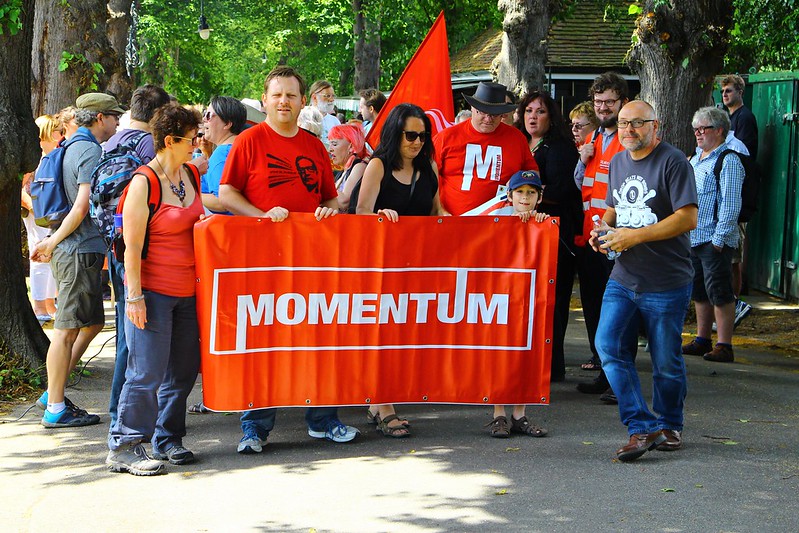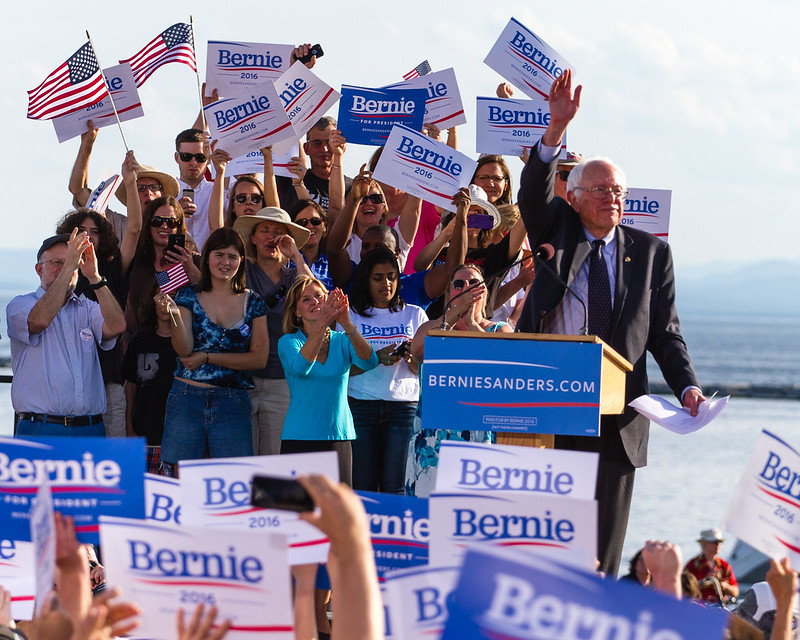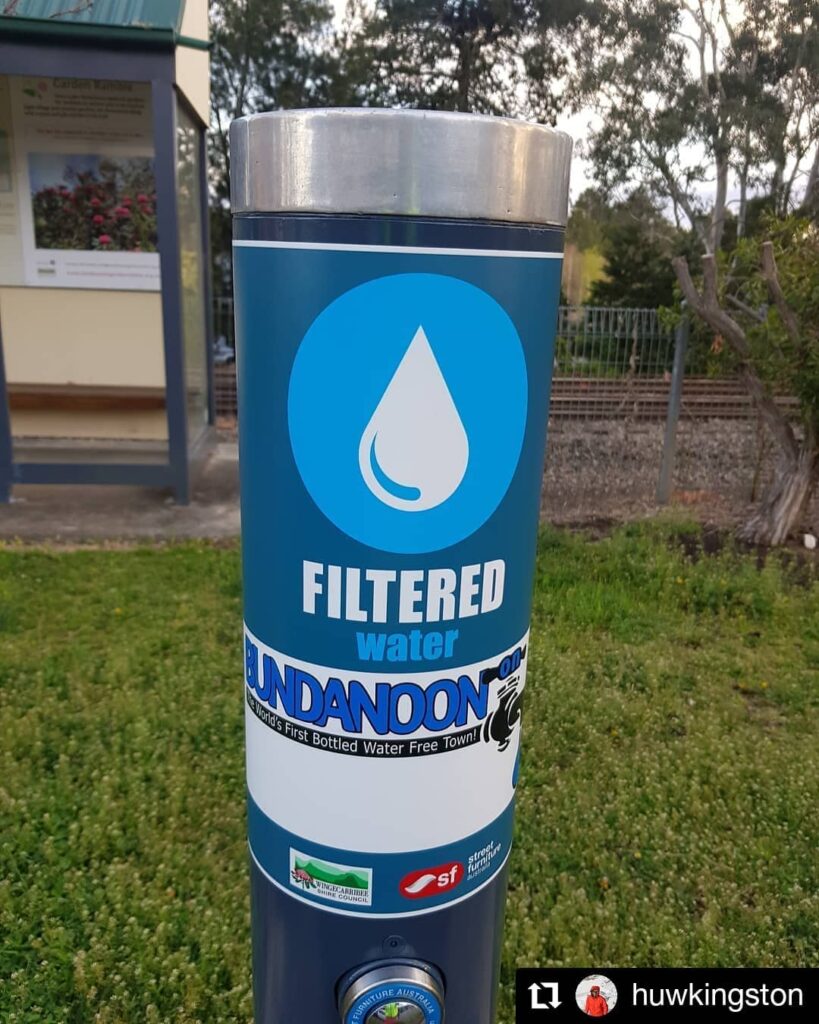Table of Contents
Grassroots movements are essential to involve local communities and have their voices heard.
Want to raise over $200M? Swing constituencies by over 12%? Mobilize over 10,000 volunteers? Over 100,000 signatures? Defeat major corporations? Change corrupt policies? Yes, you can.
You don’t need to be a billionaire, and you don’t need to spend hundreds of millions of dollars. And you don’t need to be an old-school entrenched part of the ‘system.’ You can be a first-timer, gathering some friends in your home town. With the help of technology and inspiration from these fantastic grassroots movement examples, you can change the world.
Momentum: Grassroots gamechanger through digital technology
The United Kingdom’s ‘Momentum’ is one of the best examples of digitally aware grassroots political movements in which amateur volunteers overcame enormous odds—and the numbers prove it.

Image: Momentum supporters at the Rally for Corbyn demonstration in Canterbury on 16 July 2016 – Flickr/Funk Dooby
- Overcame 100-to-1 odds in the party leadership campaign.
- Made over 100,000 phone calls through a phone banking app.
- Created a voter tracking app that drove 100,000 volunteers to canvas.
- Coordinated a volunteer campaign to knock on 1.3 million doors.
- Held 50 on-ground events over 50 weekends to speak to voters.
- Increased Labour’s total seats by 30 in the General Election.
Momentum began as a campaign to elect Jeremy Corbyn to the leadership of the Labour Party in 2015, powered by overwhelming grassroots support that transformed the political landscape.
Corbyn beat ‘100-to-1 odds‘ to win that fight. Momentum’s campaign would lead “120,000 new people to register as supporters of the Labour Party, 84% of whom would vote for Jeremy Corbyn as its leader.” Corbyn bagged 59.5% of the vote after being a relative unknown with little chance of success a few months earlier.
A standout of that campaign was the ‘Calling for Corbyn’ phone bank system, which allowed volunteers to make 100,000 calls to Labour Party members.
The members did not allow the energy of that victory to dissipate. From 2015 to 2020, the movement has been central to the Labour Party’s workings. Momentum was a driving force in the 2017 UK General Elections, and momentum’s efforts helped Labour increase its seats by 30, winning 40% of the national vote.
The group had an estimated grassroots campaigning network of only 24,000 dues-paying members and 200,000 supporters. They created the ‘My Nearest Marginal’ website. Over 100,000 interested non-members used it to reach out to swing voters, four times the number of dues-paying members! The website allowed anyone to find the nearest MP with a small winning margin and canvass that constituency.
This caused swings of upto 12% in favor of Labour, winning seats considered unwinnable. Grassroots lobbying had done the trick!
Their social media presence was also a massive hit, with Facebook videos getting millions of views. The result of all this online virality reflected in the polls. Over 60% of those aged 18-30 voted for Labour.
It wasn’t the funds they raised or the number of volunteers on their books that changed the game—the essence of a grassroots movement—but Momentum’s ability to reach out and motivate tens of thousands. This grassroots rise to leadership is a remarkable case of political participation through digital engagement.
Lessons learned from grassroots movements examples
Even a simple app to connect volunteers can transform your grassroots movements. Make it easy for a small number of volunteers to reach out to a large number of swing or undecided voters. It will make a difference.
Bernie Sanders: ‘Bernie 2016’ is the gold standard of a digital grassroots organization
Bernie 2016 may not have made Bernie Sanders the President of the United States. But through its pioneering use of technology, they have transformed how grassroots movements – with no ties to big donors or Super PACs – can make their voice heard in politics.

Image: Sanders at his campaign launch in Burlington, Vermont, late May 2015 – Flickr/Jake Bucci
Here are some of the numbers:
- Of the $228M the ‘Bernie 2016’ campaign raised, 57% were individual donations of less than $200.
- The average donation was $27, and some 4 million supporters donated.
- A pioneer in the use of technology, they were among the first to use Text-to-Donate, Relational organizing, and peer-to-peer texting at this scale as an innovative political advertising strategies.
- Bernie’s campaign made an estimated 75 million calls and sent 8 million text messages nationwide, using call center software.
Before Bernie 2016, text messaging was unsuitable for reaching voters. But Bernie 2016 changed that by using technology to send millions of texts through an army of over 10,000 volunteers.
These ‘peer-to-peer’ texts are not automated auto-sends but a means to have real conversations with human volunteers, who responded to any replies they got – much like traditional phone calls but at far greater scale and speed. It proved a stunning success and is now part of any meaningful campaign in America, often amplified by social media campaigns that boost volunteer engagement and fundraising. Bernie 2016 even used this for spontaneous fundraising. During a Republican primary debate, the campaign rolled out a text asking supporters to text the word “Now” each time they felt outraged – a command that triggered a $20 campaign donation.
Leaving no online source of support behind, the Bernie campaign even found support from Reddit, where 90,000 Bernie supporters once helped organize a 10,000-strong rally for him. This was one of many examples of how social media platforms could amplify grassroots organizing beyond traditional platforms, transforming political discourse and engaging more people in the political process.
The campaign also highlighted various social issues, such as healthcare and income inequality, that resonated deeply with voters, challenging existing social norms and sparking important conversations on how the system should address these concerns. This created a social movement that not only mobilize learge number of people but also focused on building relationships with grassroots supporters, encouraging long-term political engagement.
The campaign’s ‘Field the Bern’ app used ‘relational organizing’ before that even became a thing, allowing campaign volunteers to canvass their existing friend and family networks. The Bernie campaign was among the first to use this system, today rising to become a mainstay of any campaign.
This was just part of the app’s abilities. It could also onboard volunteers in seconds and help them set up virtual ‘field offices’ for the movement. Volunteers could then reach out to voters, organize events, collect surveys, and canvass their neighborhoods. In total, about 300,000 people used the app.
In April 2015, Bernie walked out of the US Senate House in Washington DC (not his home state) and held a ten-minute press conference on the steps announcing his candidature. By June 2016, 14 months later, he bagged 13 million votes in the 2016 Democratic Party Primaries.
Not bad for a man who is not even a Democrat! (Bernie was, and remains, an Independent.)
Lessons learned from grassroots movements examples
Use the latest technology, digital platforms, or social media apps for grassroots movements. Don’t be afraid to be the first to do so, since reaching out to local powers and political leaders in this way proves more effective than reaching out to a small number of ‘big donors’ in the traditional way.
Bundanoon: Grassroots movement does the ‘impossible’ in their small town
In 2009, a shop owner’s campaign in one small town in Australia led to a ban on plastic water bottles – despite attention from a global company. This was the first such ban in the country. The ‘Bundy on Tap’ movement got residents to agree to ban bottled water from the town of Bundanoon, New South Wales.

We don’t have any numbers from this one. But if you look around the world and wonder how to change it all on a large scale – from climate change to wealth inequality, here’s your inspiration to start with your hometown.
Norlex, a Sydney-based company, wanted to build a water extraction plant near Bundanoon (Population: 2500 at the time) in 2006. The company would dig a borewell that extracted 50 million liters of water yearly and ship the same to a processing plant in Sydney.
Residents of the town felt this would drain their groundwater and bring tanker trucks to their town’s roads, right near the primary school. They went to court to have the plant stopped.
But Huw Kingston, then the owner of a cafe and bike shop in the town, wanted to take things to the logical end. Instead of just protesting, he believed in direct action. Why protest only the extraction of the water? Why not refuse to sell the final product as well?
Kingston began with a letter to the local paper – the Jordan’s Crossing Gazette. In this letter, he clearly outlined the issues and how to address them. This inspired small grassroots groups to assemble and try to make this a reality.
They came up with the following solutions –
- Bottled water would be removed from the shelves of all Boundanoon shops. There was no legal ban per se—it was voluntary.
- They would tie up with companies or associations to install water fountains in the town and the town’s primary school for the children.
- They would petition government bodies to ensure that safe and drinkable water was provided to these fountains.
- Shops would maintain a supply of reusable, refillable water bottles for sale for a low cost, which could then be filled at the water fountains.
- Some shops would maintain chilled filtered water for sale for those who wanted cold water in their bottles.
- Appropriate signs would be put up around the town, indicating to tourists where they could get water and bottles.
These measures won support among local businesses. After a town vote on 26 September 2009, in which 354 voted for the proposal, and two opposed it, the ‘ban’ came into effect.
All the ideas mentioned above were implemented. The town’s latest big story is about a beloved cockatoo’s death. This indicates that life has continued – with less litter, less plastic, and more fresh water for everyone.
As for Kingston? He continued his activism and grassroots movements, last seen in March 2023, walking 500 kilometers across Australia for a new cause.
Lessons learned from grassroots movements
We all want to change the world but often don’t know how to begin. The best advice is – start from your own home. Learn how to make a small change, and soon you will make big ones.
Aru Island: How grit helped bring the world’s attention to a remote island’s epic grassroots battle
In eight months, a grassroots movement in one of the poorest parts of the world took on a powerful company backed by a corrupt government. The company had billions at stake and the permits to turn an entire island into a sugar plantation. The movement had no money, but it had some students, elders, a poet, and a priest. And they won.

Here’s how Indonesia’s legendary ‘Save Aru’ movement did the impossible.
- Through a corrupt governor, the PT Menara Group hoped to take over 28 land allotments in Aru, which covered 77% of the entire island.
- The ‘Save Aru’ movement was led by activists but ensured it included the entire community from day one.
- Despite no broadband or stable connectivity, they made their campaign internationally viral. They built ‘information chains’ using handwritten notes, SMS, and traveling to and fro to Aru.
- They used their viral fame to hold large protests, build personal contacts, and get the backing of politicians and influential institutions.
- They traveled to every one of Aru’s 117 remote villages—some of which required days of trekking—to share information and collect signatures.
Theddy Tengko, an Indonesian government official running the island of Aru, approved the sugar plantation project of the Menara Group a few weeks before he was charged with stealing millions of dollars and later arrested for paying voters in cash for their votes.
The whole thing might have gone under the radar until it was too late if it wasn’t for students like Collin Leppuy, community leaders like Father Jacky Manuputty, and activists like Rudi Fofid.
Operating from a roofless hut with no salaries, Aru agitators had only a basic means of gathering and spreading information for their grassroots movements. But they soon built up a viral social media presence by drip-feeding information from remote and unconnected Aru. They gathered notes, images, videos, etc., through a physical network of trusted volunteers who used SMS, handwritten notes, or carried thumb drives from one island to another. Money for equipment like cameras or a website came through T-shirts, food sales, and donation drives.
They also spoke to thousands of community members in Aru (over 60,000 strong) and inspired tribal elders, women, and workers to stand with them. Volunteers also traveled to all corners of the remote Aru island, with its 117 villages, by bus, boat, and trek through the forests. This was never a ‘we lead, you follow’ movement.
It remained a ‘we are in this together’ movement till the end.
Interestingly, they built up a network of moles and spies thanks to their ability to inspire the working class. These moles, often waiters or serving staff in the five-star restaurants where ministers and Menara group employees would meet, gave crucial information about the company and the government’s plans, along with pictures.
Local customs and traditions were also incorporated, like a boycott declared by elders through a ritual or the wearing of red bandanas to show a readiness to fight. Volunteers also got thousands of letters signed and held candlelight vigils, concerts, and poetry sessions. This battle to preserve nature, heritage, culture and human rights ensured all four were prominent in the movement. It also highlighted the community’s deep concerns about climate change, linking deforestation directly to environmental degradation.
This helped Aru activists expose illegalities and inaccurate studies backing the project. They also organized hundreds of protests by locals, who remained strongly united despite government pressure, company bribes, and old tribal hostilities.
In the end, the minister of forestry canceled the project after immense public pressure – a major victory that was not seen in other parts of Indonesia, where vast swathes of rainforest have been cleared for similar plantations.
Lessons learned from grassroots movements examples
Never underestimate the ability of social media platforms to bring attention to your cause, even if you lack traditional amenities like broadband internet or even fancy cameras. In fact, smart use of social media can often replace traditional campaign tools, helping you organize, mobilize, focusing on building relationships, and influence the digital market at a scale that was unthinkable just a decade ago.
Broadcast your message, and involve everyone to win. Remember – you must appeal to grasstops as much as to the grassroots.
Ultimately, these grassroots movements examples prove that we cannot be limited in our vision of what technology can do, especially when connecting large numbers of people and guiding them toward a cause.
And that door can also open powerful movements to fight climate change by protecting forests, ecosystems, and indigenous land. Never imagine you cannot organize at a large scale because you have fewer resources or volunteers – even in other countries facing similar limitations. The digital age has lowered all barriers, and today, tech has made activism, advocacy, and change easier than ever.

